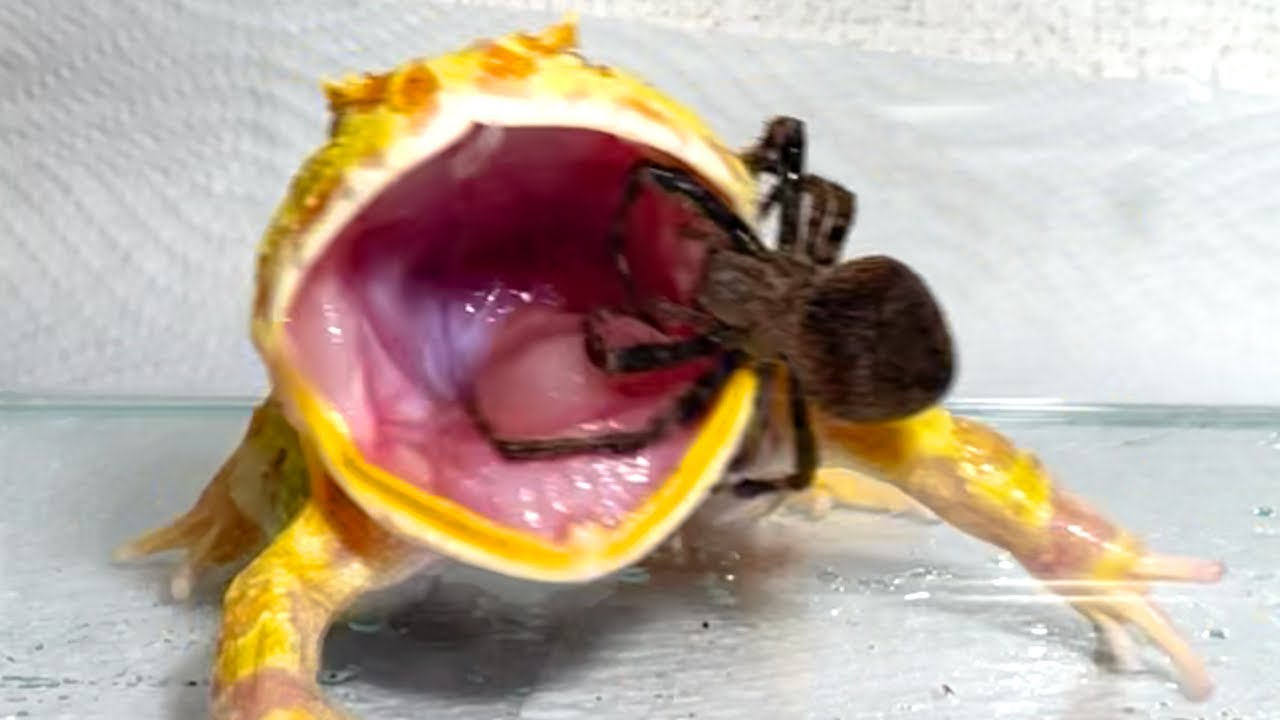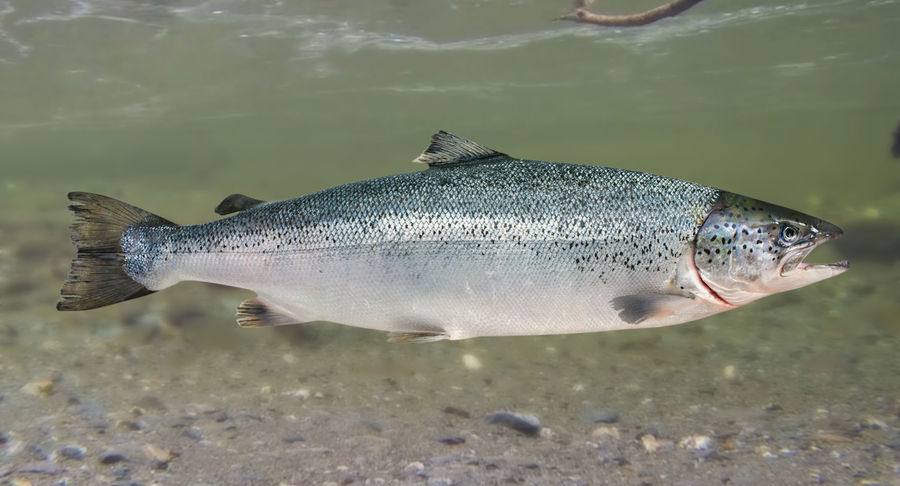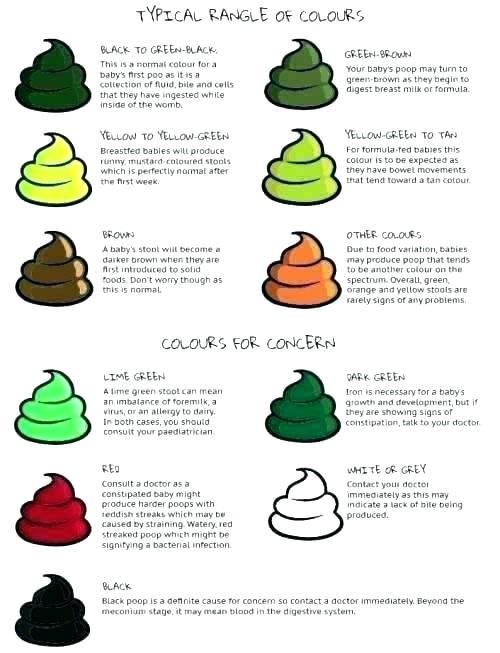What to feed baby pacman frogs
How to Care for Your Pacman Frog
Pacman frogs, or Argentine horned frogs, are a robust frog found in moist grasslands from Argentina to Brazil. Their name is taken from the iconic 1980s Pac-Man arcade game, as they share the same voracious appetite, round body and large mouth.
Over the years, due to their easy care, general hardiness and availability of captive-bred specimens, Pacman frogs have become popular pets and are usually available at most pet stores. However, they are not suitable pets if you want an active frog.
Size and Colors
Baby Pacman frogs can reach adult size in about one year if well fed. Male Pacman frogs can grow up to three to four inches in length, whereas females can be larger at about four to seven inches. Adult females can weigh over a pound.
The average lifespan is between seven to 10 years. If well cared for, they can live up to 15 years in captivity.
Pacman frogs come in a variety of color morphs. Always opt for captive-bred frogs instead of wild-caught imports for their increased hardiness and multiple color morphs.
Pacman Frog Housing
Pacman frogs are ambush predators that sit and wait for a passing meal. They spend most of the time sitting half-buried in the bedding and waiting for food. Due to their inactive nature, they do not need a large enclosure, as they won’t utilize the extra space provided.
A 10-gallon terrarium is the standard size for an adult. Babies can be kept in smaller, plastic cages until they are large enough for an upgrade.
Substrate
The biggest part of caring for your Pacman frog is the substrate. They love to dig down and bury themselves, so proper bedding is important. Acceptable choices include coconut fiber, organic potting soil or bioactive substrates. Avoid using gravel, as it is hard to burrow into and might be accidentally consumed.
Pacman frogs will use hiding spots, such as live or plastic plants, smooth cave structures, leaf litter and moss. Moss can also help keep the humidity high and can be remoistened as needed.
The substrate should be misted as necessary to prevent drying out; it should be damp but never soaking wet.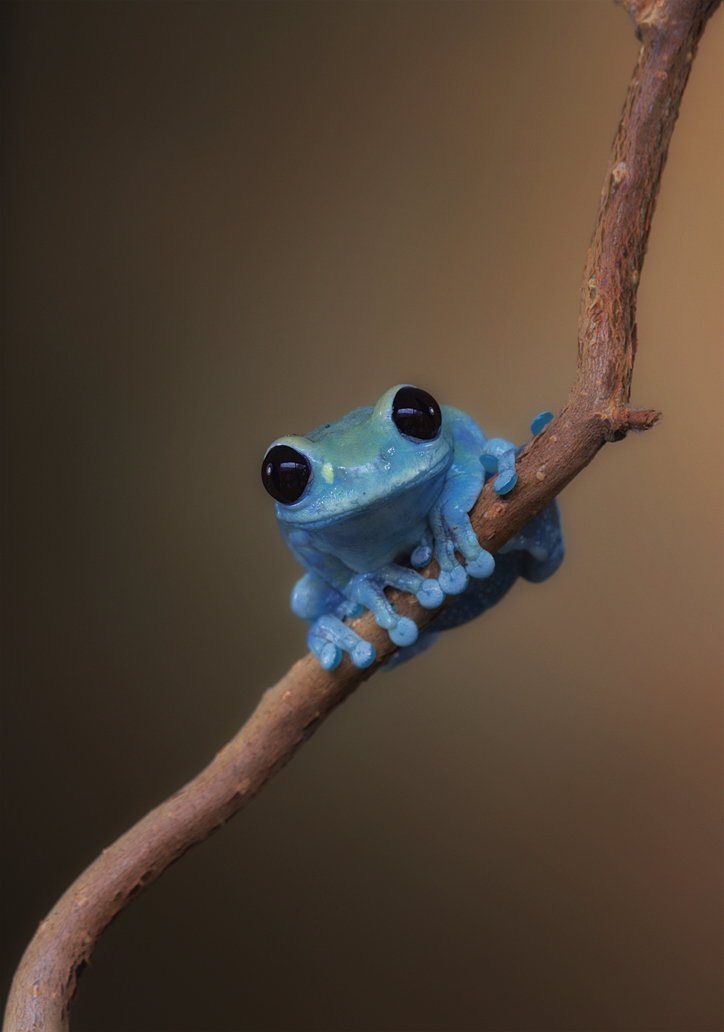 If it does dry out, the frog might enter into a state of hibernation, or brumation. Their outer skin will thicken to prevent dehydration, their movement will stop and they will appear dead. However, once rehydration occurs, they will shed and eat the outer skin and return to normal.
If it does dry out, the frog might enter into a state of hibernation, or brumation. Their outer skin will thicken to prevent dehydration, their movement will stop and they will appear dead. However, once rehydration occurs, they will shed and eat the outer skin and return to normal.
Avoid this behavior; it is the Pacman frog’s last effort to survive a drought, and it might not always revive after rehydration occurs.
Temperature and Lighting
Pacman frogs need to be in the 70 to 85-degree range. Daytime temperatures can be kept about 80 to 84 degrees. It can drop down to the mid-70s at night.
Place an undertank heating pad on one end of the cage, but use a thermostat to prevent the frog from burning if it digs down too far. Add an incandescent heat bulb for supplement heat, if needed. Keep in mind that young frogs can quickly dry out under a hot lamp.
Other than the potential heat lamp, Pacman frogs don’t require special lighting; regular room lighting will suffice.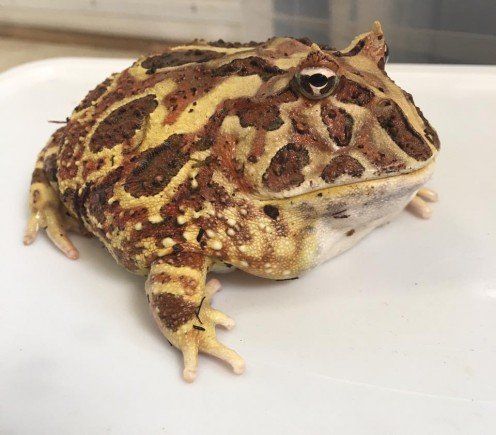 If you have live plants, add a fluorescent fixture and put it on eight to 12 hours a day. For a UVA/UVB light, make sure it’s an amphibian-safe strength and not one designed for desert inhabitants.
If you have live plants, add a fluorescent fixture and put it on eight to 12 hours a day. For a UVA/UVB light, make sure it’s an amphibian-safe strength and not one designed for desert inhabitants.
Pacman Frog Food and Water
Pacman frogs are easy to feed, as they are greedy and indiscriminating eaters. Babies will mainly eat small insects and fish, including crickets, guppies, minnows, mealworms, dubia roaches and wax worms. Sub-adults can be fed the occasional pinkie mouse. Adults can eat an occasional full-grown mouse or baby rat. If you do offer goldfish, limit the amount as goldfish contain a chemical called thiaminase that can build up in the body and potentially harm your frog.
Smaller Pacman frogs that are mainly fed insects should be offered food daily. Larger frogs can be fed every two to three days. However, please note that Pacman frogs will eat anything that fits in their mouth, including other frogs, so don’t house two or more frogs together.
Watch your frog’s body weight and feed it accordingly. Supplementation in the form of “dusting” the food should be done at least every other feeding with a high-quality vitamin/mineral supplement to ensure proper bone growth and prevent deficiencies.
Supplementation in the form of “dusting” the food should be done at least every other feeding with a high-quality vitamin/mineral supplement to ensure proper bone growth and prevent deficiencies.
Provide a shallow dish of water that allows the frog to drink and bathe without drowning; Pacman frogs are terrible swimmers and don’t like deep water.
Handling and Health Problems
Note that Pacman frogs have teeth and can bite, so handling should be done with care. Do not put your hands or fingers in front of their mouths.
Like all amphibians, the skin is highly sensitive; handling should only occur when necessary with clean, wet hands that are free of soap or lotion residue.
The most common health problem with amphibians is bacterial or fungal infections, primarily in the skin and eyes. Look for redness or abnormal swelling.
Another health issue is ammonia poisoning if waste is allowed to build up. Toxic levels of ammonia can then enter through the skin and potentially be fatal to the frog.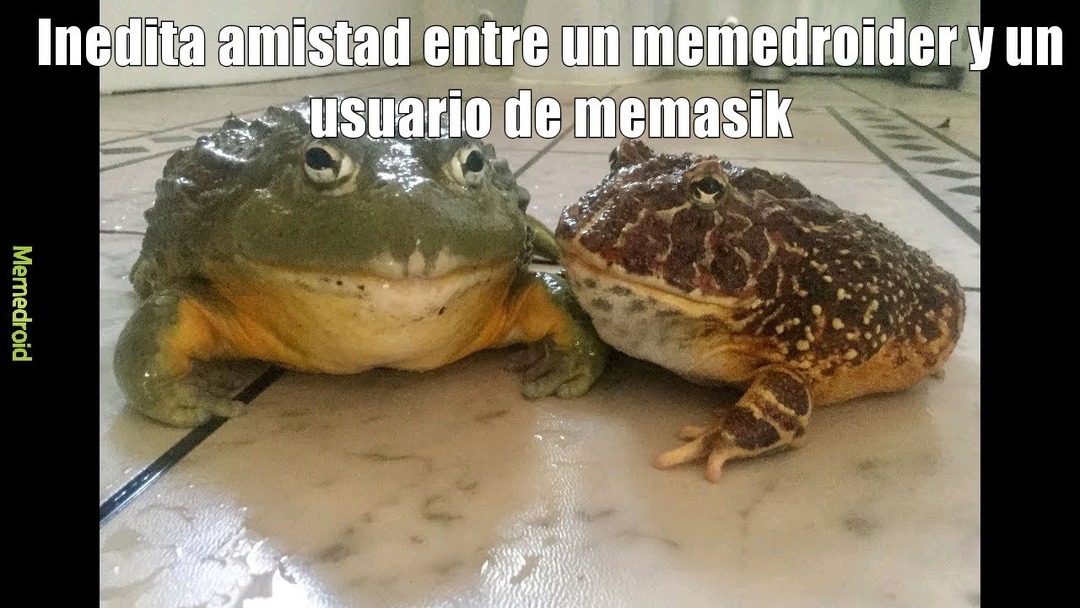 Avoid this by regularly cleaning the cage.
Avoid this by regularly cleaning the cage.
Baby Pacman Frog Care: The Ultimate Beginner’s Guide
Are you thinking of bringing home a baby Pacman frog? Have you recently purchased your baby Pacman, brought it home the size of a quarter, and now you want to ensure you provide the best level of care?
The good news is that Pacman frogs are hardy amphibians and relatively easy to care for, which is why they are a top choice for first time amphibian pets.
| Pacman Frog Quick Facts | |
|---|---|
| Common Name | Pacman frog |
| Scientific Name | Ceratophrys |
| Adult Size | Male: 2.5 to 4 inches, Female: 4 to 7 inches |
| Lifespan | 15 years |
| Tank Size | Male: 10 gallons, Female: 20 gallons |
| Humidity | 60% – 80% |
| Heating | 70ºF – 83ºF |
| Substrate | Coconut fiber |
| Hides and Accessories | Shallow big water bowl |
| Diet | Dubia roaches, nightcrawlers, crickets, locusts, superworms, BSFL |
| Supplement | Calcium and multivitamin |
Tank
Baby Pacman frogs can be housed in a small plastic reptile enclosure for a period of time.
However, remember that they grow quickly so you will want to buy them their permanent enclosure within a short period.
You can put your baby Pacman directly into the enclosure you want to use for them as an adult, which should be between ten and twenty gallons.
Substrate
Pacman frogs are lazy frogs and your baby Pacman shouldn’t be any different. They are lay and wait predators.
They spend their time burrowed in the substrate with just their horns (eyes) sticking out of the substrate.
The substrate you provide should be damp, providing the ideal conditions for your amphibian pet.
Coconut fiber is a preferred substrate, which is easy to use and comes in brick form, which expands when exposed to water. This enables you to put a decent layer of substrate down to make your pet as comfortable as possible.
Heat and Lighting
Pacman frogs are nocturnal. However, they still have specific heating and lighting requirements with babies requiring slightly warmer temperatures than the adult frogs.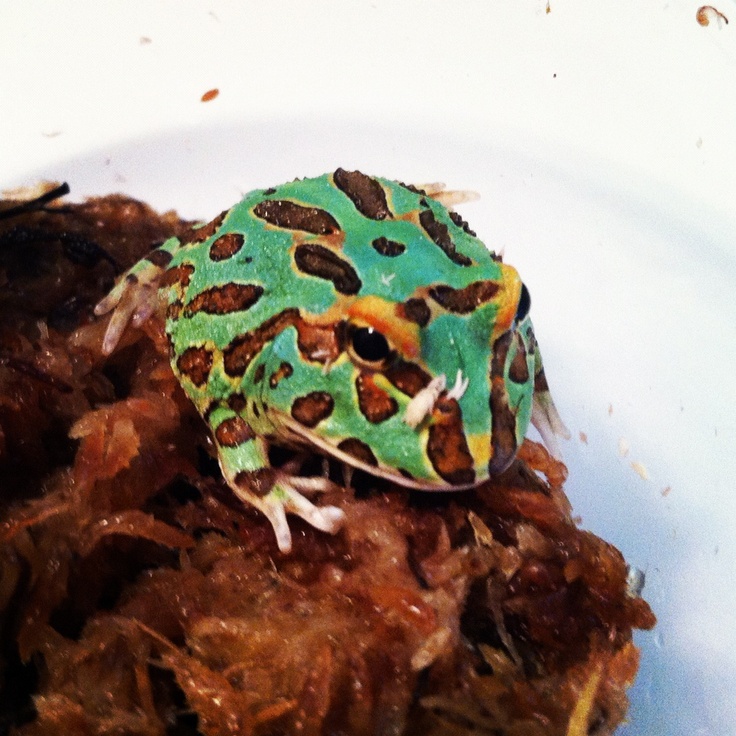
Being nocturnal you do not need to provide a sunlight bulb; ensure the bulb you use is not a UV bulb. Provide your frog with twelve hours of daylight and twelve hours of night.
Temperatures for a Baby Pacman
- Day – 77ºF to 82ºF (25ºC to 27.7ºC)
- Night – 70ºF to 75ºF (21.1ºC to 23.8ºC)
Temperatures for Adult Pacman
Once your baby grows into an adult, you will want to change your temperatures.
- Day – 75ºF to 80ºF (23.8ºC to 26.6ºC)
- Night – 65ºF to 70ºF (18.3ºC to 21.1ºC)
Humidity
Your Pacman frog is originally from humid jungles. Therefore, they require the humidity in their enclosure to be between 60% and 80%. Ensure you do not allow the humidity to drop below 60%.
You can monitor this effectively with a digital hygrometer.
In order to boost humidity levels, you can mist the enclosure a couple of times a day, if needed. Misting involves spraying dechlorinated water using a spray bottle, lightly dampening the substrate, and décor.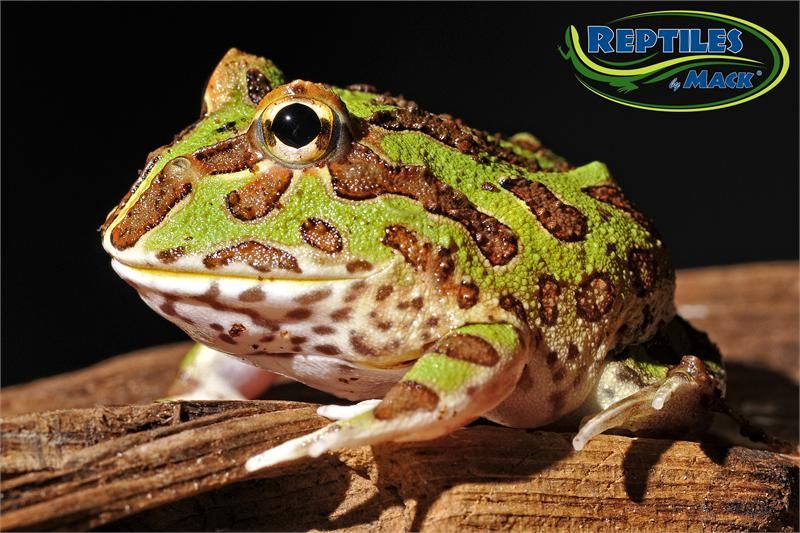
You do not want to soak the inside.
The heating lamp you use will help to cause the liquid to evaporate, increasing the humidity level inside the enclosure.
If you are struggling to maintain the right humidity levels you can add a larger water bowl to the enclosure to improve humidity.
The water bowl should be shallow that your Pacman can climb in with its head sticking out, a deep bowl could result in drowning of young Pacman frogs.
Related –How to maintain ideal humidity level in a Pacman frog terrarium.
Decorations
Decorations can be varied depending on the tank look you are going for.
Natural enclosures are the most preferred with a deep and damp substrate where your frog can burrow with some rocks and logs to provide added hiding spaces, providing your frog with some privacy.
A shallow water bowl should be placed in the center of the enclosure, providing easy access to drinking water and to assist in raising humidity levels.
Bioactive enclosures are also very popular with up to a 20 gallon enclosure, a good drainage substrate and live plants. You can add some cork flats to create hiding places for your frog, along with a shallow water bowl.
Baby Pacman Frog Diet and SupplementFoods
Baby Pacman frogs need a varied diet which includes crickets, mealworms, nightcrawlers, and wax worms. Wait until your baby frog is adult size before you start feeding pinkies and mice.
Supplements
Good bone development is essential for all babies, whether it’s a human or a frog. Frogs need calcium and vitamin D, which is essential to their bone health, reducing the risk of metabolic bone disease.
Ensure you dust all food in calcium with vitamin D supplements to ensure your pet gets the vitamins it needs to promote healthy bones moving forward.
Feeding
How Often Should I Feed My Baby Pacman Frog?
Baby Pacman frogs should be fed daily. They have a hearty appetite and growing babies require regular meals. Don’t be too concerned if your baby Pacman only eats every second day.
They have a hearty appetite and growing babies require regular meals. Don’t be too concerned if your baby Pacman only eats every second day.
How Much Should I Feed My Baby Pacman Frog?
Most Pacman frog owners will tell you that you should feed your baby Pacman as much as it can eat in fifteen minutes.
The good news is that most of these frogs will stop eating when they are full. You can leave live food in the enclosure overnight, ensuring you remove any uneaten food the next day.
When Should I Feed My Baby Pacman Frog?
Due to the fact that Pacman frogs are nocturnal, the best time to feed is just after the lights go out. You can leave live food in the enclosure overnight to encourage natural hunting instincts.
Related –Pacman frog food chart and feeding guide
Why Is My Baby Pacman Frog Not Eating?
There are a couple of reasons your baby Pacman frog may not be eating.
If you have recently brought your baby Pacman home or moved it to a larger enclosure, then it needs time to settle down before it eats.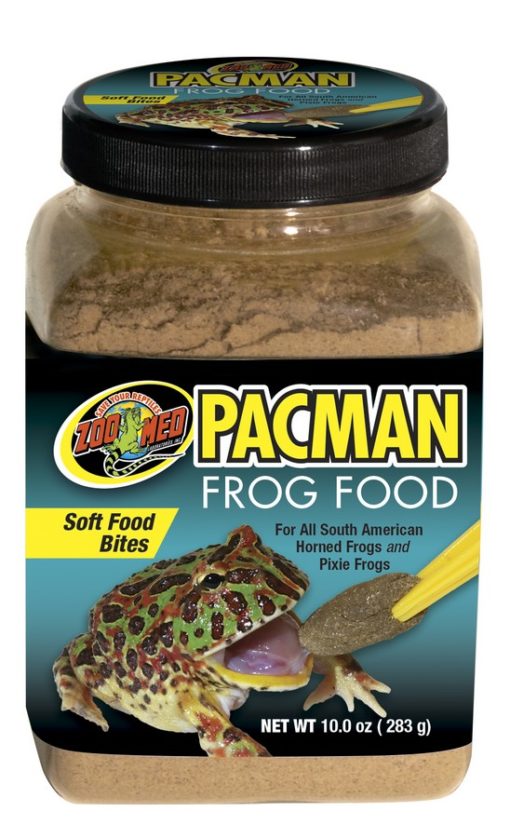
You should start encouraging your frog to feed within a week, you don’t want to leave babies without food for too long.
Another reason is you may not have optimal temperatures. Temperatures that get too low can result in your Pacman frog going into brumation (hibernation). It is not encouraged to allow baby Pacman frogs to go into brumation within their first year.
Tips to Encourage Feeding
If you are worried your baby Pacman isn’t eating, then there are a few things you can do.
Settling InIf your baby frog has recently been introduced into a new enclosure, allow it up to a week to settle in before worrying about feeding
Hand FeedingSome Pacman frog owners prefer hand feeding their frogs, which requires using tongs to encourage the frog to grab and eat the food.
Baby Pacman frogs may be used to being tong fed and quite happy to eat this way, others may refuse to eat.
Separate ContainerIn order to reduce the risk of impaction, some Pacman frogs prefer feeding their frogs in a separate container.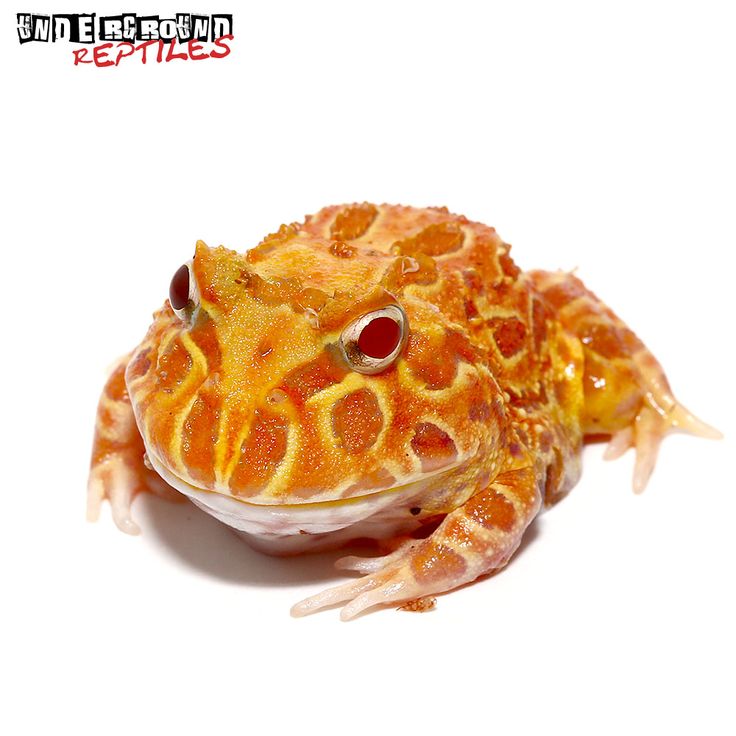
You can try placing your frog in a plastic container and then introducing their live food, allowing them to eat without any substrate around which could cause impaction (constipation), which can be a serious problem that requires veterinary treatment.
Natural HuntingIntroducing your baby Pacman frog to natural hunting at an early age is the easiest way to encourage feeding.
Your frog is already spending most of the day burrowed in the substrate just waiting for prey to come along.
Adding live food to the enclosure at night and allowing your frog to hunt naturally is a reliable and effective way to encourage eating.
Related – Learn more about reasons a Pacman frog is not eating.
Baby Pacman Frog CroakingWhen Do Baby Pacman Frogs Start Croaking?
Baby frogs will start croaking from about six months of age. If you’re worried about croaking, then you are going to have to try and determine the sex of your frog early on.
Baby Pacman frogs don’t croak, nether do the females. Only male Pacman frogs croak.
But, don’t be fooled, baby Pacman frogs can scream. Screaming is a protective measure that is only carried out by baby and female Pacman frogs. They may also scream when eating and bathing. It sounds like a high pitched chirp or groan.
How Much Will a Baby Pacman Frog Croak?
Pacman frogs are going to make a noise, whether they are in your home or in the wild, but the good news is that they will make less noise in captivity than if they were in their natural habitat.
These frogs tend to make the most amount of noise during mating season, other than that your Pacman frog may croak a few times a day, mostly when feeding and during misting.
Why Is My Baby Pacman Frog Die SuddenlyWhile Pacman frogs tend to be very hardy frogs, baby Pacman frogs are not as strong and can die rather suddenly, which can be devastating for the new amphibian pet owner.
Here are some of the reasons your baby Pacman frog may have died:
- Poor diet – not enough variety to provide essential vitamins and minerals
- Unhygienic living conditions – can result in parasitic and bacterial infections
- Improper temperatures – can result in your frog becoming too cold or too hot, too cold and the frog can brumate.
- Food too big – Only feed your baby Pacman frog food that will fit in its mouth. These are voracious eaters and it’s not uncommon for baby Pacman frogs to choke on their food because it is too big, result in death.
- Impaction – eating substrate with food can lead to impaction, which is constipation, which can be various serious and needs veterinary care.
- Lack of calcium and vitamin D – lack of supplement Calcium and vitamin D can result in metabolic bone disease in Pacman frogs
- Dirty water source – Dirty water can result in a host of infections in your baby Pacman frog.
Pacman or Slingshots » Toad Quaba
Frogs called Pacman belong to the subfamily Ceratophryinae.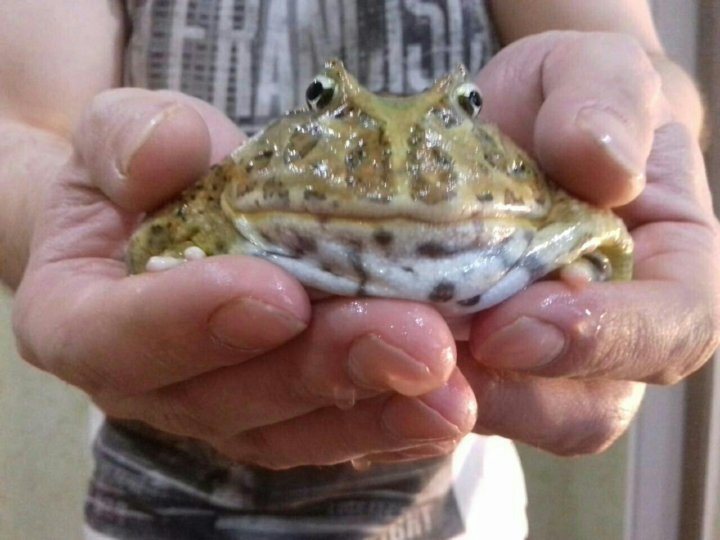 They have big mouths, huge bellies, and due to their appearance (reminiscent of the video game character Pac-Man), they got such a nickname.
They have big mouths, huge bellies, and due to their appearance (reminiscent of the video game character Pac-Man), they got such a nickname.
Pac-Mans are actually Horned Frogs, they are colorful and relatively easy to keep at home. These are probably the most popular types of frogs kept as pets. The name "horned frog" or "slingshot" refers to the fact that they have a fleshy "horn" above each eye. nine0005 Six known species of slingshot originate from South America. However, not all of them are suitable for life in captivity.
They have extremely broad bodies and short strong legs. These legs are quite powerful, although they do not make Pac-Man good swimmers or jumpers compared to other frogs.
The mouth of horned frogs has a width almost equal to the width of the body. Pacman is a powerful and aggressive creature, often trying to catch and eat something of its own size! This means that in the wild it will try to eat small mammals, birds and even other frogs. nine0003
If an enemy appears or someone invades its territory, the horned frog inflates its body, which visually makes it even larger. She then advances with her mouth wide open, preparing to attack and making staccato sounds.
She then advances with her mouth wide open, preparing to attack and making staccato sounds.
It should be noted that slingshots have very good eyesight. They perfectly hide, can become invisible in a variety of interiors, due to the ability to change color.
Mouth contains rather sharp teeth. Jaws can grab and squeeze prey like tongs! It really is a hardy amphibian! nine0003
Female Horned Frogs are larger than males, which is typical for most frog species. It is difficult to determine the sex until they reach the age of 2-3 years.
If you decide to keep the Pacman as a pet, all you need is a container measuring about 46 x 30 x 30 cm. These amphibians are best kept individually. The situation in the terrarium can be "Spartan". Usually it is shallow water and a piece of land made of stones so that it is convenient to climb it. Make sure that the water only covers the frog halfway without blocking the nostrils. nine0005 Maintain a constant temperature around 25-28 degrees Celsius.
For frogs, a fairly deep substrate of gravel and leaf litter is suitable for burrowing. Artificial shelters will not be superfluous - this will help your pet feel safe. Be sure to put a shallow dish for bathing and monitor the humidity.
The main condition for the successful keeping of Pac-Mans is cleanliness. Cleaning is done every day or every other day. The water must be changed every day. nine0005 Place the frog in another container while cleaning. Be aware that these little amphibians have a sensitive bite!
Pacman has an amazing appetite and his feeding is the basis of his care. Young frogs can eat crickets, worms, and pinky-sized mice. They should be fed 2 or 3 times a week. For the normal development of frogs, it is advisable to give them vitamin and calcium supplements.
Adults should receive immobilized (to avoid injury) mice every 3 weeks. nine0003
What do frogs eat? - zootut.art
Natalia | March 7, 2022 | Nutrition | No comments
Before bringing home any new pet, it is important to understand what he eats.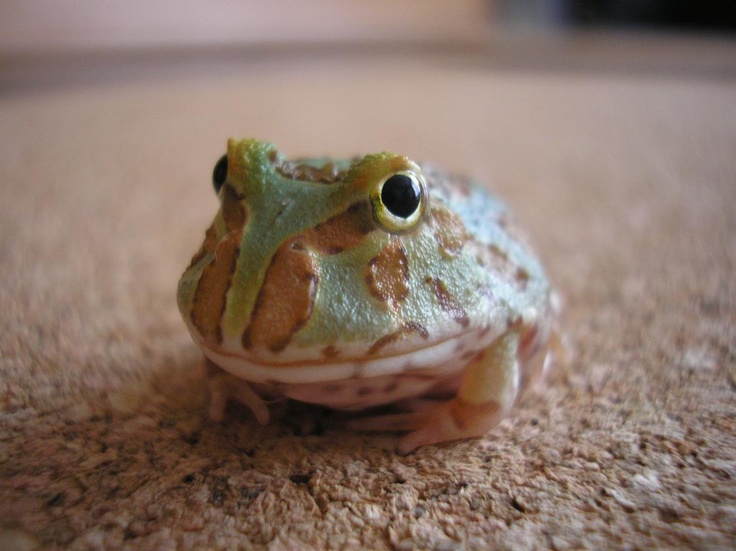 Frogs can be a beautiful and interesting decoration for your home, but only if you can feed them properly. So what do frogs eat?
Frogs can be a beautiful and interesting decoration for your home, but only if you can feed them properly. So what do frogs eat?
Frogs are carnivores and cannot simply eat prepackaged food like dogs do. This complicates the task. In the wild, frogs eat a wide variety of insects. Frogs are carnivores and tend to only eat things that move, which means you feed your frog live insects!
General Feeding Guidelines for Frogs
Frogs are truly versatile predators - they will eat just about anything that gets in their way in the wild. They will eat spiders, grasshoppers, butterflies and just about anything that fits in their mouth. Water frogs feed on various aquatic invertebrates.
Each species of frog has specific nutritional recommendations, but in general your pet frog will eat a mixture of the following foods. nine0003
-
- Crickets. They will form the basis of your favorite frog's diet. This is not because they are the healthiest, but simply because they are easier to buy or grow at home.
 Be sure to fill them with intestines before feeding the frog!
Be sure to fill them with intestines before feeding the frog! - Meal worms and wax worms. This is another tasty snack for frogs. Like crickets, mealworms are fairly easy to find in pet stores or grow at home. You can also buy them from fishing bait stores, but they won't be filled with guts. nine0055
- Locusts and grasshoppers. They may be a little harder to find in pet stores or buy for frogs, but they add much-needed nutritional variety to your pet's diet.
- Caterpillars or worms. They are becoming easier to find in pet stores for purchase. Be sure to get caterpillars that are the right size for your frog, as they can get pretty big!
- Bloodworms, brine shrimp and black worms. They, along with other small worms, will be the main diet of water frogs. nine0055
- mice. They are part of the diet of large frog species such as Pacman frogs and African bullfrogs.
 As the frog grows, start feeding the "little fingers" or newborn mice. You can buy them frozen or live, but be aware that most frogs will not eat frozen. Larger frogs will eat "fluffies" or even adult mice. If this annoys you, choose a smaller frog.
As the frog grows, start feeding the "little fingers" or newborn mice. You can buy them frozen or live, but be aware that most frogs will not eat frozen. Larger frogs will eat "fluffies" or even adult mice. If this annoys you, choose a smaller frog.
- Crickets. They will form the basis of your favorite frog's diet. This is not because they are the healthiest, but simply because they are easier to buy or grow at home.
Be sure to feed your frog food that is smaller than the frog's head, otherwise your frog's intestines may be damaged. Try to buy gut-loaded insects whenever possible, as they are much more nutritious for your frog! If you can't buy gut-filled food, your frog may develop bone disease due to a lack of calcium in the diet. In addition, these insects will be low in other important vitamins and nutrients that your frog needs. Some people prefer to "sprinkle" their frogs' food with a food supplement before feeding their frogs, especially if they grow their frogs' food at home. Feeding the intestines with insects, along with vitamin supplements, is a great way for a frog to get the nutrients it needs to be healthy. nine0003
Avoid feeding your frog fruit or vegetables, human table scraps, or wild-caught insects. Wild insects pose a serious risk of pesticide exposure, which can be very dangerous for your frog.
Wild insects pose a serious risk of pesticide exposure, which can be very dangerous for your frog.
How much and when to feed your pet frog
The exact schedule and amount to feed your frog depends on its species, age and activity level. Like humans, frogs can become obese if overfed. It is important to feed your frog in the right amount to keep your pet healthy and fit. nine0003
- Vigorous frogs (eg pygmy frogs) and young frogs (up to 16 weeks old) should have frequent access to food. Feed young frogs and vigorous frogs every day or even twice a day. This may mean leaving some food, such as fruit or vegetables, in the tank for the insects to eat.
- Medium energy frogs should be fed every other day or every third day. In general, they should be offered as many insects as they can eat in 15 seconds. Then remove the remaining errors. Make sure you feed enough that your frog won't finish eating within seconds, but don't feed so much that you'll see crickets the next morning! nine0055
- Larger frogs should be fed less frequently.
 Large mouse-eating frogs may eat as infrequently as once a week or once every two weeks.
Large mouse-eating frogs may eat as infrequently as once a week or once every two weeks.
Your pet frog should have access to clean, dechlorinated water at all times. You can purchase a dechlorinator from most aquarium stores. Either create a pool of water in the aquarium or spray the aquarium regularly - preferably both. Frogs don't drink through their mouths, so it's important to keep them moist. They “drink” by absorbing water through their skin! nine0003
Frogs eat a wide variety of things in the wild. Feeding your pet frog should include a mixture of various gut-laden insects to ensure proper nutrition. Make a plan for how you will store these live insects before you bring home your new frog!
About the author
Natalia
There are many formidable, kind and funny animals in the world. Everyone goes their own way, some with people, and some without them. Our cats and dogs have become family members. We separate their fights, give them our caresses.